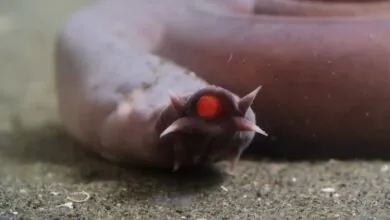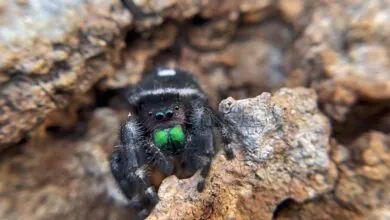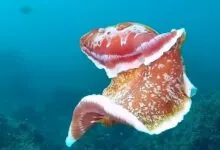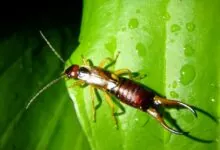Mako Shark: The Deep’s Rapid Predator
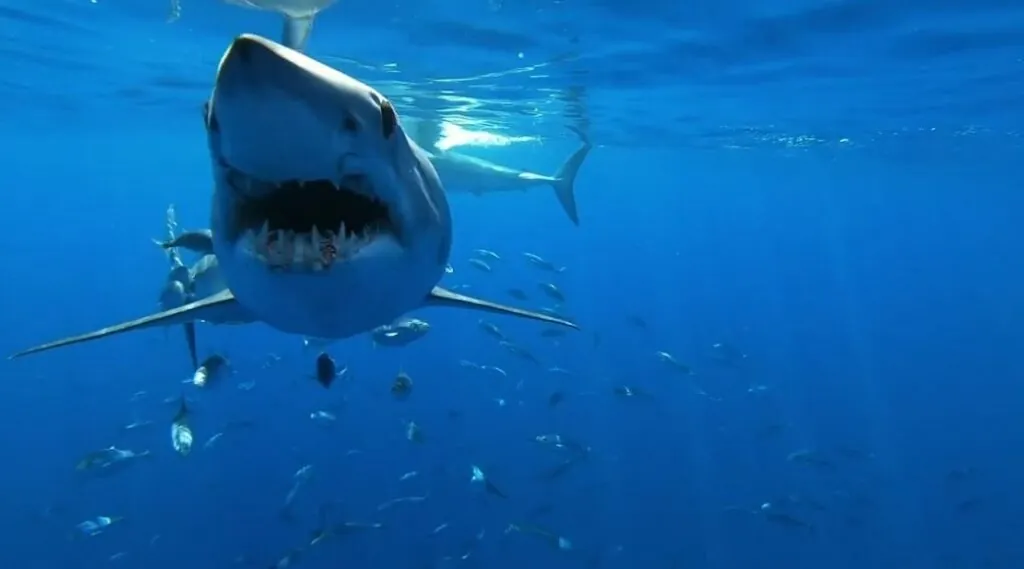
Mako shark is known as the largest types of sharks as well as the true apex predator of the ocean, which thrive in the diverse environment of ocean. This shark has been classified into two species, the Shortfin Mako (Isurus oxyrinchus) and the Longfin Mako (Isurus paucus). Their scientific name is “Isurus”, which means “equal tail”, however, the other names of Mako are bonito sharks and sometimes blue pointers.
They have very distinct features as compared to other sharks, such as incredible speed, powerful, long, and sleek, streamlined bodies with the title of fastest swimming sharks. Their speed is truly incredible as they can even compete blue whale, Great white shark and killer whale, that’s why they are credited as fastest fish in the ocean.
| Kingdom | Phylum | Class | Order | Genus | Scientific Name |
| Animalia | Chordata | Chondrichthyes | Lamniformes | Isurus | Isurus oxyrinchus |
Origin and Evolution
Mako sharks share their order with other predatory sharks like, porbeagles and Great white Sharks and known as the oldest ancestries of jawed vertebrates on Earth as they have been diverged from other vertebrates. Being through several adaptations including streamlined body and large fins, they have become very active and improved overtime.
Since they have been categorized into two types, the only thing that distinguishes both types is the size of the pectoral fins along the sides of their bodies. Moreover, their body shapes are also different a little, for instance, longfin mako having larger eyes and a darker-colored snout than the shortfin.
However, both categories have many things in common too, for example, both species eat food about 3% of their body weight and need several days to digest it. Both species are found in temperate and warmer waters worldwide.
Distribution
Makos are populated in countless oceans and seas around the world as they can reside in various climatic conditions, including temperate and tropical waters. They undergo long migrations when searching for prey or other suitable conditions for living.
Geography
The geographical presence of this apex predator is an evidence to its adaptability and role in keeping the delicate balance of the marine environment.
| Continents | North America, Europe, Oceania, Asia, South America |
| Subcontinents | North America, Western Europe, Australia, Southeast Asia, South America |
| Countries | United States, Canada, Spain, Portugal, Australia, New Zealand, Indonesia, Philippines, Chile |
| Bio-geographical Realms | Nearctic Realm, Palearctic Realm, Australasian Realm, Indomalayan Realm, Neotropical Realm |
| Biome | Marine |
| Climate Zones | Temperate, Tropical |
The Makos’ vital role in maintaining marine equilibrium is evident through its presence across various continents, subcontinents, and bio-geographical realms. From North America to Southeast Asia, it thrives in both temperate and tropical climates within marine biomes, encompassing open oceans, coastal regions, and continental shelves.
Notably, the Mako’s reach extends to unexpected corners such as Egypt’s waters and even the southwestern coast of England, particularly Cornwall, where its dynamic nature continues to fascinate marine enthusiasts and researchers alike.
Population
Makos with a common name Isurus sharks are known for their impressive speed and agility, making them vital for keeping a balance in the marine ecosystem. Currently, their population is declining due to various factors like habitat degradation and overfishing.
Marine experts are now very concerned about the potential extinction of the mako shark. This is due to the necessary makos’ contribution to maintain the marine ecology. This species is being conserved by a number of initiatives, such as the creation of protected marine zones, enhanced monitoring, increased public awareness, and ethical fishing.
Population number
Knowing the exact population of Isurus has remained a matter of concern from a long time. Due to subtle nature of this species, it is tough to estimate their exact population number. However, various research efforts provide valuable insights, according to which Makos exist in a relatively low population as compared to other shark species.
Ecological niche
Makos being top predators have exceptional ecological niche in the marine ecosystem as they manage whole food chain. They are well-known for their large speed and agility due to which they can hunt a diverse range of prey, thus controlling population of prey species and maintaining the stability of marine ecosystem.
Habitat
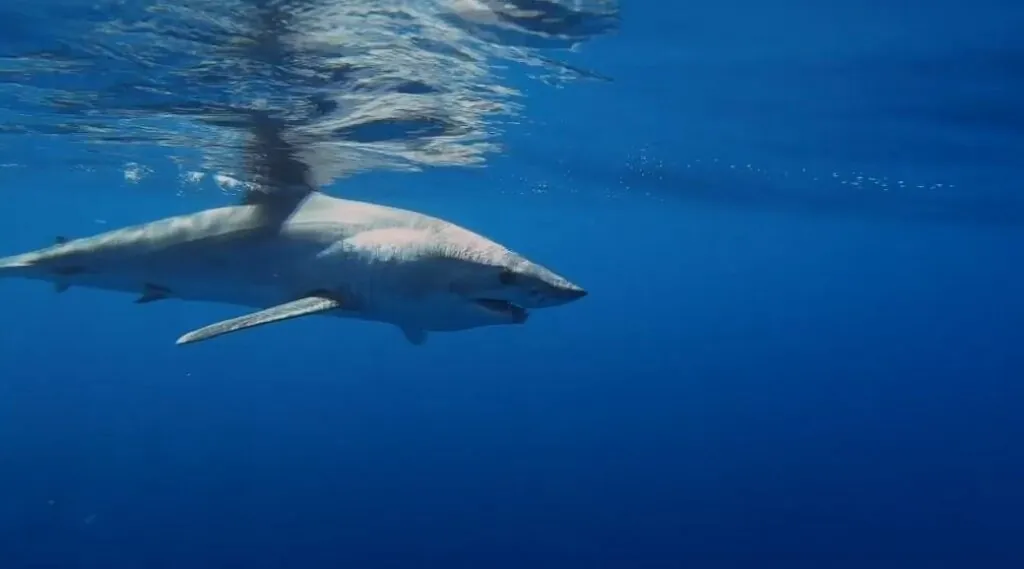
Mako shark occupies a wide range of marine locations, often preferring the deep blue sea, which showcases their ability to thrive across various climate zones. These versatile creatures are distributed from temperate to tropical regions, which emphasizes their remarkable adaptability to different oceanic conditions. Their adaptability is further demonstrated by their subspecies:
Shortfin Makos – These sharks live in the deep ocean, frequently venturing into regions where the water is as deep as 400 feet. Their affinity for these deeper waters displays their strength within the marine environment and highlights their ability to travel the deeper portions of the ocean.
Longfin Makos – Longfin Makos have a distinct affinity for their habitat, favoring temperate and tropical waters most of the time. Their presence in these areas demonstrates their capacity to flourish in a variety of marine climates, reinforcing their status as a species that is adaptable and widespread.
In unfolding marine life, one faces various species, including the elusive hagfish, which, despite its seemingly unassuming nature, plays a crucial role in the intricate balance of the ocean.
Appearance
The streamlined body shape of these sharks is the key behind their extraordinary speed. They have large eyes, pointed nose, and crescent shaped tail fin. They are 2 feet long at the time of birth. Their males can grow upto 9 feet long, while females over 14 feet.
Skin
They have very smooth textured skin, which is fully covered in small, tooth-like scales, known as dermal denticles. These denticles help them to reduce friction when they glide through water.
Color
Their captivating appearance further includes a combination of hues. They have upper body in deep blue-gray color and lower body in a radiant white. Such color contrast helps them to get blend with the marine environment, which aids them to protect themselves from predators.
Physical Characteristics
Mako sharks have a streamlined appearance that facilitates quick underwater movement and a beautiful metallic blue color when viewed from the side. Their stunning pictures underscore their prowess as nimble ocean predators by showcasing their pointed snouts, razor-sharp teeth, and unique fins.
Anatomy
Being competent predators, every body part of makos contributes to their efficiency. They have developed a variety of extraordinary adaptations that improve their chances of surviving in their oceanic environment. Let’s have a close look to their anatomical features:
| Head | Streamlined head, facilitating swift movements |
| Eyes | Large eyes with excellent vision, especially in low-light conditions |
| Mouth | Large mouth with rows of serrated and triangular teeth |
| Jaw | Powerful jaw for a forceful bite |
| Teeth | Tooth arrangement includes multiple rows that keep replacing continuously |
| Nose | Pointed and streamlined nose, reducing water resistance |
| Skeleton | Cartilaginous skeleton, lighter than bone, contributing to buoyancy. |
| Fins | 2 dorsal fins providing stability and balance during rapid movements |
| Tail | Crescent-shaped tail for incredible speed |
Reproduction and Life Cycles
The reproductive journey of makos is a fascinating intricacy. The lifespan of this species is much smaller as compared to other sharks. The life spans of their 2 species are:
- Shortfin makos – Lifespan of 30 to 35 years
- Longfin makos – 25 to 29 years
Let’s delve into the information regarding their reproduction process, unveiling a captivating narrative of their life and survival in the dynamic oceans.
Female makos are usually bigger in size as compared to their males, which is due to the tough birth process after pregnancy. They are classified as ovoviviparous as their embryos grows inside their eggs, which are present in female shark’s body.
Mating Habits
Being through internal fertilization through male’s reproductive organs known as claspers, sperm is transferred to the female reproductive tract, assuring fertilization inside female shark.
| Mating system | Internal Fertilization |
| Reproductive Strategy | Ovoviviparous |
| Sexual maturity age | 4 – 12 years, varies by species |
| Reproductive season | Mostly warm months |
| Gestation period | About 9 – 18 months |
| Newborn | 4 to 25 pups |
| Period to be independent | Shortly after birth |
Mako shark Lifestyle
With a lot of fascinating features such as Isurus sharks can reach speeds of up to 60 mph while being 6 to 10 feet long, their lifestyle is very fascinating to study. Once they have focused on a victim, their quick bursts of speed and pointed, serrated teeth are put to use. Their aggressive hunting technique solidly place them as apex predators at the top of the marine food chain.
They migrate up and down coasts, to the open ocean, and then return to the shoreline throughout their life rather than remaining in a single region. When makos hunt, they frequently breach the water’s surface and follow the large game fish.
Prey and Diet
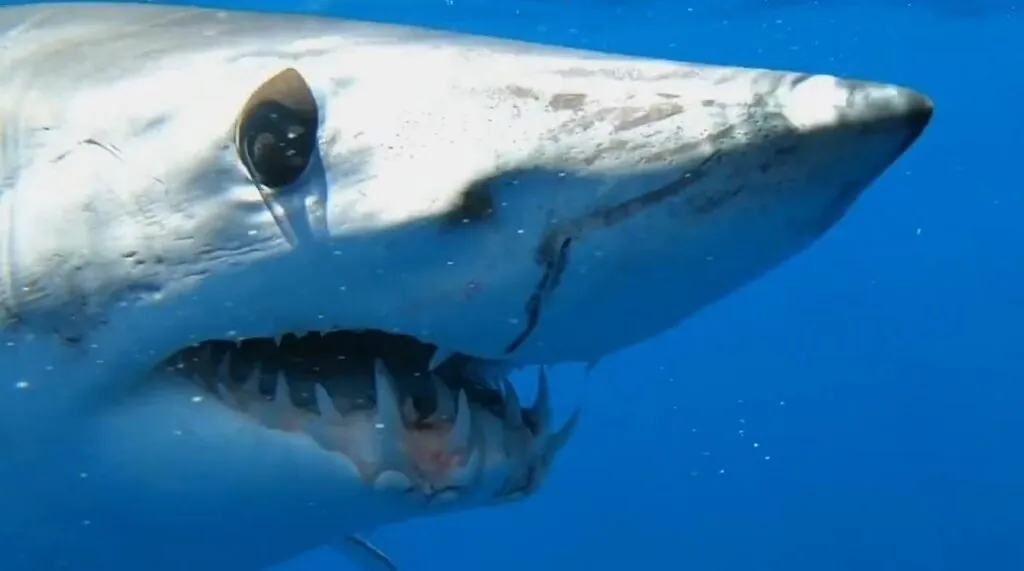
The makos’ diet encompasses a diverse array of prey, as they focus on various species, such as mackerel, tuna, herring, bonito, swordfish, squid, octopus and other cephalopods. They’ve also been recorded eating seabirds, sea turtles, other sharks, and even porpoises.
Their sharp teeth and powerful jaws help them in consuming these prey items efficiently. They have strongest measured bite force as compared to any other shark. Their adaptable predation strategy positions them as apex carnivores, skillfully hunting species that fulfill distinct ecological niches.
Predators, Threats and Conservation
Although this shark species is one of the most powerful apex predators in marine environment, yet they have to deal with a few of their predators including:
- Great White Sharks – Predator of shortfin mako
- Killer Whales (Orcas) – Hunts longfin mako mostly
- Large Toothed Whales – Such as false killer whales
- Humans – Through fishing activities due to demand of shark fins and other products
Currently, as per IUCN, makos are endangered as they are facing both natural and anthropogenic threats, impacting their population. Threats to Isurus shark include:
- Overfishing – Mako sharks are often caught using specialized fishing rigs, primarily for trading their fins, meat, and other products like jerky, including items like tooth necklaces.
- Bycatch – Sometimes, they are caught unintentionally while targeting other species, which contributes to their declining population.
- Habitat Loss – Destruction of marine habitats including coastal areas and coral reefs is one of the leading factor to their decreasing population number.
- Climate Change – Climate change leads to disturb availability of their prey species and water temperature, which affects their food chain.
Despite being efficient apex predator, population of mako shark is declining rapidly which is very alarming situation. A few years ago, this shark species was categorized as “near threatened species”, but now it is considered as the “endangered species”. In order to conserve this species, various efforts are being made, including:
- Fishing Regulations – Catch limits and size restrictions
- Protection Measures – Establishing marine protected areas (MPAs)
- Bycatch Reduction – Promoting shark-friendly fishing gear and techniques
Defense Strategies
Like other marine animals, mako shark has made a few dense strategies to remain protected from predators. A few of these strategies are as follows:
Speed – Mako sharks are capable of reaching speeds of up to 60 miles per hour (97 km/h), allowing them to quickly escape or target prey.
Body shape and Color – Having streamlined body shape and counter-shaded coloration helps them to get blend with surroundings, making it harder for predators and prey to spot them.
Body Temperature – Being endothermic, they can regulate their body temperature higher than the surrounding water, enhancing their swimming performance in cool water.
Acute Senses – Their excellent capabilities like acute vision, hearing, and electroreception help them detect prey and potential threats from a distance.
Aggressive Behavior: When threatened or cornered, mako sharks can exhibit aggressive behaviors. They might engage in rapid and unpredictable movements, as well as making sudden lunges or sharp turns, to deter potential predators or competitors.
Group Behavior – Swimming in groups aid them to remain protected against larger predators.
Jumping and Leaping – Their spectacular leaps out of water, called “breaching“, serve them as a strategy to dislodge parasites, evade predators, or stun prey.
Relationship with Humans
Simply take into account the bite force of makos when evaluating their relationship with humans—3000 pounds of bite power is no joke! Despite the fact that mako sharks, particularly shortfin makos, can be deadly to humans, this is not always the case. Only 9 Mako assaults on people have been recorded thus far.
Fishing these species based on self-interest by humans has left a very bad impression on them. Owing to their highly prized fins, meat, economic significance, and use of their fins in traditional Asian recipes, these sharks have been the focus of significant fishery.
Despite the fact that they are more frequently seen in offshore waters and are less likely to encounter people there, they are riskier for those attempting to fish them for sport and drag them into boats. Since mako only attacks on humans when feel threatened, it is undoubtedly not the most dangerous species of shark.
The Rundown and Fun Facts
Both shark species have many alluring characteristics, but the most noticeable one is their speed. Because of the larger bodies than shortfin makos, longfin makos are slower in comparison. The maximum speed for a shortfin mako is 46 miles per hour, while the maximum speed for a longfin mako is 35 miles per hour. Let’s have a look on more fun facts about this species!
| Common Name | Mako Shark |
| Other Name(s) | Blue Pointer, Bonito Shark |
| Number of Species | 2 |
| Lifespan | Shortfin Mako: 35 years, Longfin Mako: 29 years |
| Weight | Shortfin Mako: 570 kg, Longfin Mako: 500 kg |
| Length | Shortfin Mako: 3.2 m ,Longfin Mako: 4.5 m |
| Top Speed | Upto 60 mph (97 kph) |
| Predator | Larger sharks like Great White Sharks and Orcas |
| Prey | Fish, including tunas, mackerels, and other pelagic species |
| Favorite Activity | Hunting and chasing fast-swimming prey |
| Most Distinctive Feature | Powerful streamlined body & vibrant coloration |
Regarding fun facts about mako shark, the International Game Fish Association (IGFA) reported that the largest mako shark ever captured was obtained in 2001. It was a female shark that weighed 1,221 pounds and was probably longer than 11 feet. The Massachusetts mako, however, wasn’t the only big mako shark to be caught off the US coast. A mako that was over 11 feet long and weighed 1,323 pounds was killed in 2013 by a fisherman in California.
Domestication and Care
Although it is very common to domesticate many fish species or even dolphins, but domesticating shark is not such kind of practice due to their living needs. A few reasons behind not domesticating them are as follows:
- Makos are highly migratory in nature as they cover long oceanic range while searching prey or suitable environment. Bounding them to a confined place would require extremely large and specialized tanks, which is of course tough!
- Having specific dietary needs, it is necessary to maintain appropriate diet for them in confinement which will be difficult and costly.
- Captive environments for makos can cause stress and behavioral changes, which will affect their health and well-being.
- They can grow quite large and are powerful due to which housing and managing them safely is a significant challenge.
